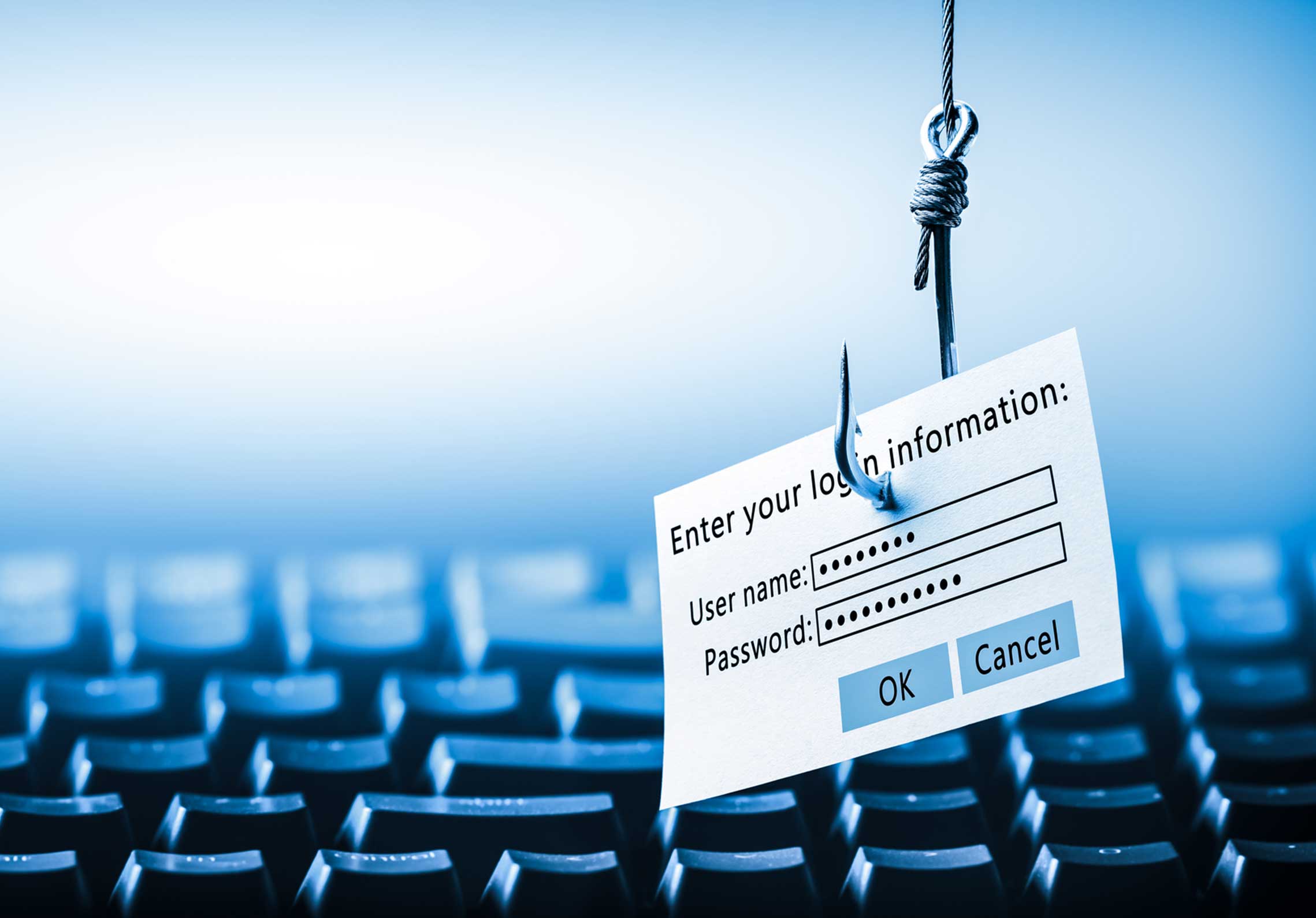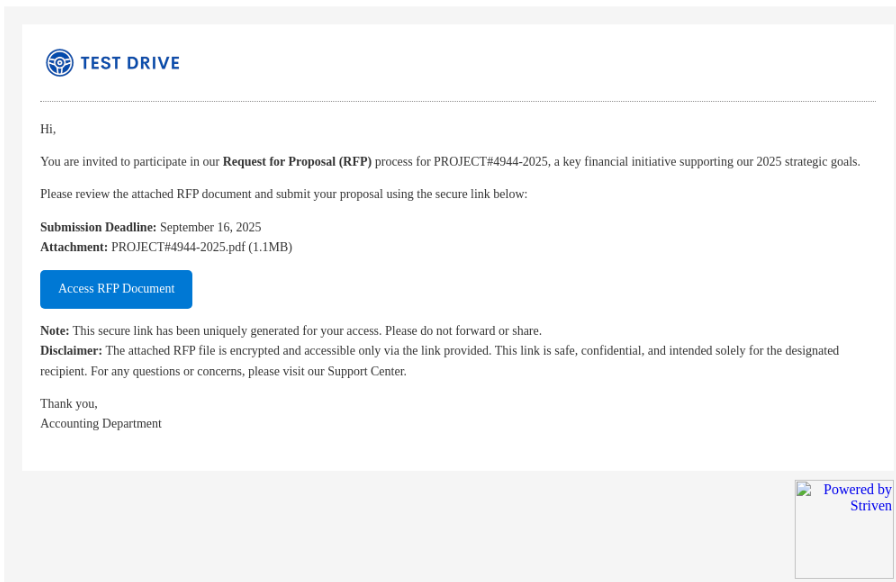Branded Phishing
[Fake RFP Email]
This campaign abuses trusted branding and RFP (Request for Proposal) lures to harvest corporate credentials. Attackers create realistic email templates, spoofed document invites, and redirect victims into credential harvesting portals disguised as Microsoft Office 365 login pages.

Attackers are increasingly blending corporate branding, document lures, and email templates into phishing kits that look indistinguishable from genuine business correspondence. This campaign demonstrates how a fake RFP request with embedded redirects ultimately delivers a credential harvesting page.
Initial Lure: Fake RFP Email
The campaign starts with an email masquerading as an Accounting Department request for proposal (RFP) submission.
Key features of the lure:
- Subject/Theme: Business-related, “Request for Proposal (RFP)”
- Deadline-driven: Submission due by September 16, 2025, to add urgency
- Attachment reference: Fake PDF file (
PROJECT#4944-2025.pdf) — but no real attachment provided - Embedded link button: “Access RFP Document”
This email makes use of legitimate branding (logos and footers from a real SaaS provider), helping it bypass suspicion.
The “Access RFP Document” button contains a hidden redirect chain that eventually lands the victim on a phishing page.

Infection Chain
Analysis of the embedded URLs reveals a multi-stage redirect sequence:
Stage 1: Infection URL
https://wxpaeao[.]clicks[.]mslsend[.]com/tj/cl/eyJ2Ijoie1wiYW...
- First click leads through an email marketing/campaign service abused by the threat actor.
- Used to obfuscate final payload delivery.
Stage 2: Redirect URLs
https://overviewsummary[.]powerappsportals[.]com/#3dc25vb...
https://links[.]info4tdsolutions[.]com/ls/click?upn=u001...
https://loginmcr0sftonIine-kulouuz[.]az2554844132065184848541514[.]cc
- Multiple nested redirects add complexity, make analysis harder, and evade automated filters.
Stage 3: Credential Harvesting Page
Victims finally land on a Microsoft Office 365 lookalike portal:
- Uses Cloudflare CAPTCHA to feign legitimacy.
- URL is not Microsoft:
loginmcr0sftonIine-kulouuz[.]az2554844132065184848541514[.]cc - Notice deliberate misspelling:
mcr0sftonIineinstead ofmicrosoftonline.

Phishing Portal
The final phishing page is styled to match Microsoft 365 login, including:
- Company-specific branding/logo (pulled dynamically)
- Email pre-filled from query string parameter
- Password prompt identical to Microsoft login
After submission, credentials are sent to the attacker-controlled endpoint:
https://segv2[.]cc/api/login

Technical Indicators
Observed Infection URLs:
https://wxpaeao[.]clicks[.]mslsend[.]com/...https://overviewsummary[.]powerappsportals[.]com/...https://links[.]info4tdsolutions[.]com/...
Observed Payload URLs:
https://loginmcr0sftonIine-kulouuz[.]az2554844132065184848541514[.]cchttps://segv2[.]cc/api/login← credential POST address
Observed IPs:
104[.]17[.]107[.]239104[.]17[.]108[.]2393[.]162[.]125[.]343[.]162[.]125[.]43
Key Red Flags
- Business-themed lure: Exploits trust in RFP/document workflows.
- Deadline pressure: Victims are pushed to act quickly.
- Brand abuse: Real SaaS branding/logos for legitimacy.
- Lookalike domains:
loginmcr0sftonIine[...]ccvs. reallogin.microsoftonline.com. - Multi-stage redirects: Conceals final phishing page.
Defensive Recommendations
- User Awareness: Train staff to scrutinize document/RFP requests, especially those with external links.
- URL Inspection: Always hover over links; look for subtle misspellings (
mcr0sftonIine). - Mail Security Controls: Block known phishing domains and enable link rewriting/inspection.
- MFA Enforcement: Even if credentials are stolen, MFA can reduce impact.
- Incident Response: If credentials are entered, reset immediately and review sign-in logs for anomalies.
Phishing campaigns like this demonstrate how convincing and targeted modern credential theft has become. Organizations must combine user awareness, technical controls, and strong authentication to reduce risk.


